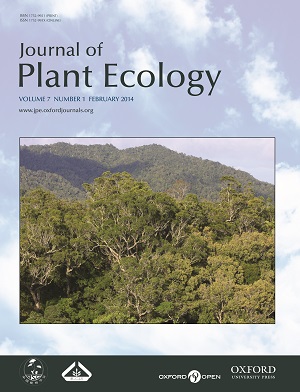Current Issue
-
 Volume 7 Issue 1
Volume 7 Issue 1
The tropical rainforest at Mt. Jianfengling in Hainan Province of China (18°44′N, 108°50′E, 1000 m a.s.l.), which is one of the six forests studied by Dongmei Jin and her colleagues in research about variation of leaf functional traits with the adult height of plant species. Photo taken by Bin Chen.
IF: 3.9
CiteScore: 5.7
CiteScore: 5.7
Editors-in-Chief
Yuanhe Yang
Bernhard Schmid
Yuanhe Yang
Bernhard Schmid
CN 10-1172/Q
ISSN 1752-9921(print)
ISSN 1752-993X(online)
ISSN 1752-9921(print)
ISSN 1752-993X(online)







